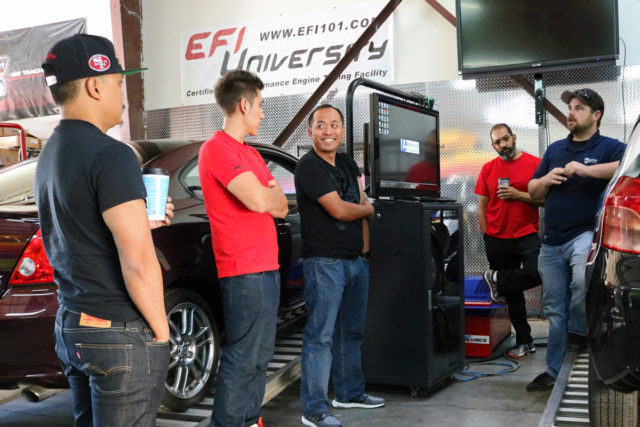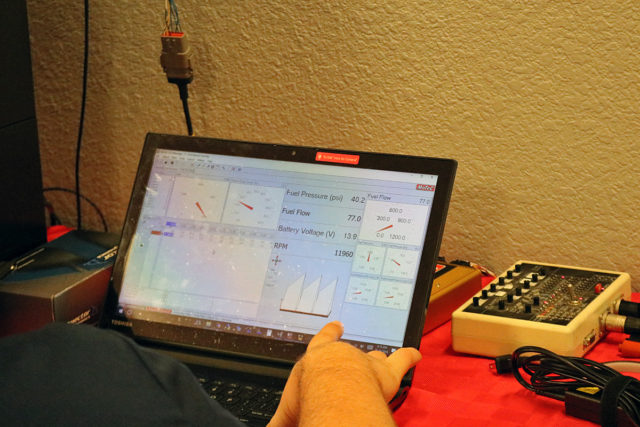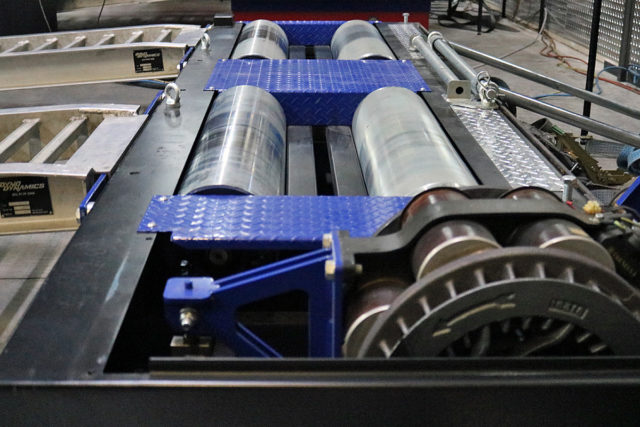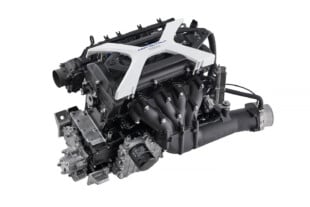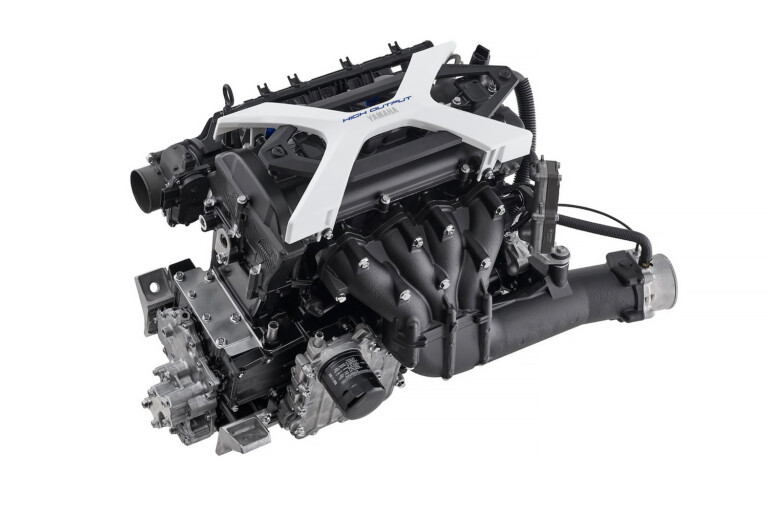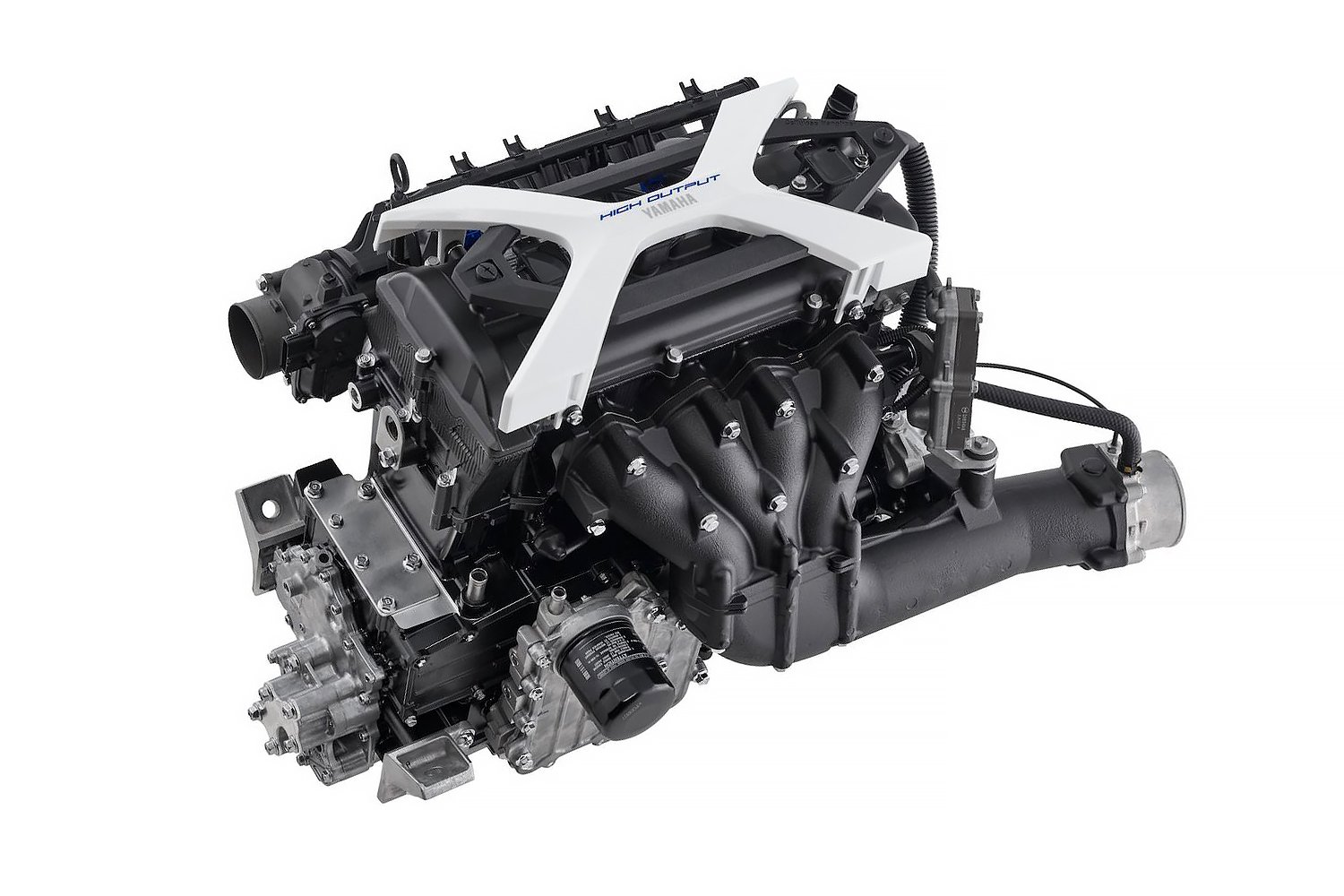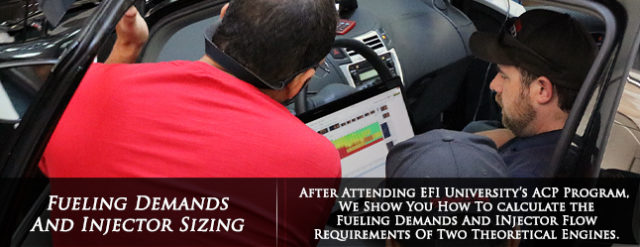 I visited EFI University’s headquarters in Lake Havasu City, Arizona, to attend the school’s five-day-long ACP (Accelerated Certification Program) and eight hour long ATC course (Advanced Turbo Concepts). After completing EFI-U’s “boot camp-style” ACP Program I was left with the tools to better myself both personally and professionally, and the experience I was given permanently changed the way I look at engines and EMS calibration.
I visited EFI University’s headquarters in Lake Havasu City, Arizona, to attend the school’s five-day-long ACP (Accelerated Certification Program) and eight hour long ATC course (Advanced Turbo Concepts). After completing EFI-U’s “boot camp-style” ACP Program I was left with the tools to better myself both personally and professionally, and the experience I was given permanently changed the way I look at engines and EMS calibration.
The topics covered in this program are very technical, and we knew it wouldn’t be possible to relay the true value of these courses through a generic overview. Instead, we are pulling several topics actually covered in these courses and are teaching them to you in a series of articles. If you missed Part One or Part Two of this series, we recommend that you start from the beginning so that you understand how we got to where we are and don’t get lost in the formulas.
Just remember, we can’t cover everything and give away all of the answers, because we really think you should take these courses yourself.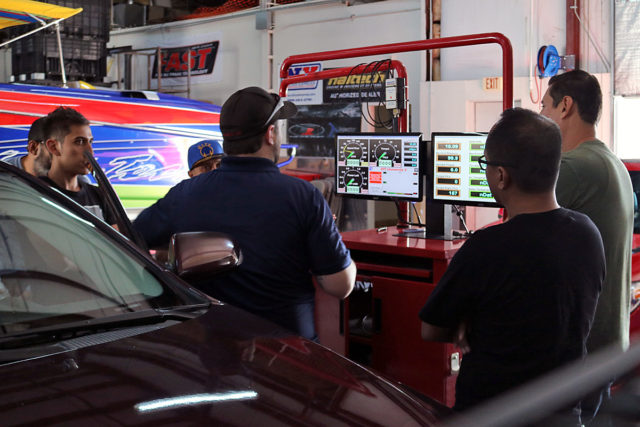
A Recap Of How We Got To Where We Are
In Part One of our ACP Program recap, we took a theoretical 302ci small-block Ford and a 454ci LSX engine and calculated what it would take (airflow wise) to get each to 800 horsepower by 8,000 rpm. To do this we had to determine each engine’s estimated horsepower capability by calculating the Volume Flow (cubic feet per minute), Air Density (pounds/cubic feet), Mass Airflow (pounds/minute) and Brake Specific Air Consumption (BSAC) for each, at sea level.
After working through the equations, we were able to estimate that the naturally aspirated 454ci LSX would barely make it by our power goal with 803 horsepower at 8,000 rpm. While the smaller displacement Ford came out to an estimated 534 horsepower at the same engine speed — which meant that our Ford would need some assistance in the form of forced induction.
Since our LSX already made the cut, in Part Two of this series we dove into the world of turbochargers to see how much additional air mass it would take to get our Ford to 800 horsepower. To find a turbocharger that would most efficiently meet the horsepower goal of our Ford, we had to calculate the engine’s required Mass Airflow (lbs/min), Volume Flow (CFM) and Air Density (lbs/cu ft) — similar to what we did previously with our engines in naturally aspirated form — as well as the required Pressure Ratio.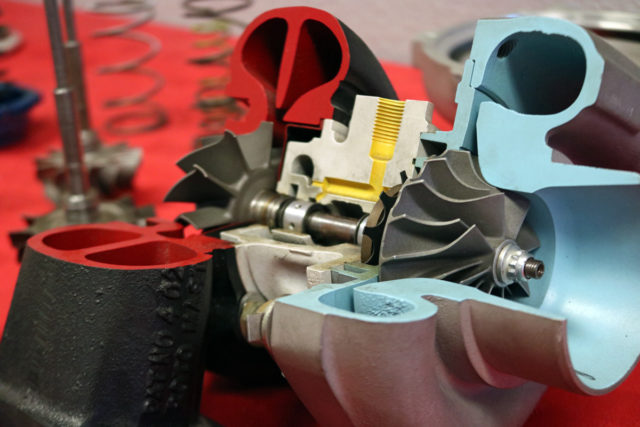
Once we had these values calculated, we were able to physically plot where the Ford would land on each turbocharger’s Compressor Map. Ultimately we determined that our small-block Ford would benefit the most from a twin turbo setup, but to keep the article simple we stuck with the “best” single turbo configuration, which we found to be the massive second generation Garrett GTX5533R.
Now that we know all of the theoretical maximum airflow requirements of our engines, we can start working on the final step of determining the flow requirements of our fuel system on pump gas.
Feeding The Beasts
In this section, we’ll discuss the Brake Specific Fuel Consumption (BSFC) requirements of each engine, as well as fuel injector sizing, and the theory behind Duty Cycle with Ben Strader, owner of EFI University and all-around EFI guru.
Fuel Consumption
At this point, you should remember our discussion on Brake Specific Air Consumption (BSAC) from Part One. BSAC is used to evaluate how efficiently an engine is able to convert the potential energy from an air mass into captured energy (horsepower). Similarly, BSFC is a measurement that represents how efficiently an engine is able to convert and conserve the energy available in a fuel. The lower your engine’s BSFC value is, the less fuel your engine will require per horsepower.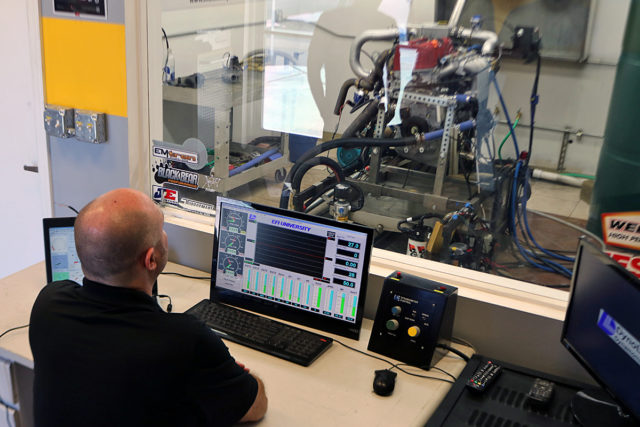
“Brake Specific Fuel Consumption (BSFC) is really nothing more than a way to describe how efficiently an engine can convert fuel into power,” states Strader. “It’s just a number that is based on flywheel horsepower versus how much fuel you use, and is stated in pounds of fuel used per horsepower per hour.”
BSFC General Guidelines
-
Naturally Aspirated – Carbureted:
0.48 – 0.55 BSFC
-
Naturally Aspirated – EFI:
0.45 – 0.50 BSFC
-
Forced Induction – Carbureted:
0.58 – 0.65 BSFC
-
Forced Induction – EFI:
0.55 – 0.60 BSFC
Since both of our theoretical engines are built and are taking advantage of the latest EFI equipment, we will assume that our naturally aspirated LSX has a BSFC value of 0.45 and our boosted small-block Ford has a 0.55 BSFC.
“In making up for the lack of displacement by moving your engine over to forced induction, nitrous, or some other power adder — you end up generating so much additional heat in the combustion chamber that the normal way of ridding the engine of heat through the exhaust or water jackets can become overwhelmed, which can damage the engine,” explains Strader. “To mitigate that we end up running the engine at a much richer air/fuel mixture.”
To calculate how many pounds of fuel per hour each engine will require to reach 800 horsepower, it’s as simple as multiplying your horsepower goal by the engine’s BSFC value.
Formula To Find The Fuel Consumption (lbs/hr) Of An Engine
Horsepower × BSFC
- 800 × 0.55
- 440 lbs/hr
Naturally aspirated LSX:
- 800 × 0.45
- 360 lbs/hr
According to our calculations, the turbocharged small-block Ford will require a minimum of at least 440 pounds of fuel per hour, and the all-motor LSX will need 360 pounds of fuel per hour. Despite having the same horsepower goal, notice how each engine requires a different mass of fuel to get there. Ultimately, the air mass is the same for each so in theory they need the same fuel mass to burn it, but with one caveat…
“While technically the volume of fuel required to burn the mass of air is the same, the combination of the additional heat created through power adders and cramming it all into a smaller package requires additional fuel to pull this heat away from the combustion chamber,” says Strader. “In the end this increases fuel consumption which then decreases your engine’s efficiency — raising your BSFC.”
What Is Injector Duty Cycle
In a port-injected EFI engine, you effectively have just one engine cycle before you lose your opportunity to supply enough fuel for the air being pulled into the engine on that cycle. -Ben Strader, EFI University
Injector Duty Cycle is simply a measurement of the injectors total time opened versus the total time available, expressed as a percentage. With 0 percent being off and 100 percent being static — meaning that the injector does not have enough time to even shut off between cycles, and you need an upgrade immediately.
“In a port-injected EFI engine, you effectively have just one engine cycle before you lose your opportunity to supply enough fuel for the air being pulled into the engine on that cycle,” states Strader. “The amount of time you have available is a variable that’s a function of your engine’s speed. So as engine speed increases, the amount of time you have available to supply the engine with fuel decreases.”
“For a number of reasons we want to limit the injector duty cycle percentage, and we would typically like to see that duty cycle value below 85 to 90 percent at peak power,” says Strader. “This allows us to maintain control of the injector and keep it within the linear flow range.”
“Let’s say you have a set of fuel injectors on your engine that currently run at a peak Duty Cycle of 50 percent. At this percentage we know that we still have about 35 percent more headroom available to supply additional fuel,” proposes Strader. “Assuming the air/fuel ratio stays the same, it’s safe to say that your fuel system can support a 35 percent increase in air mass [horsepower] as well. If your horsepower goal exceeds this value, then you know you need to upgrade fuel system components.”
Calculating Minimum Fuel Injector Size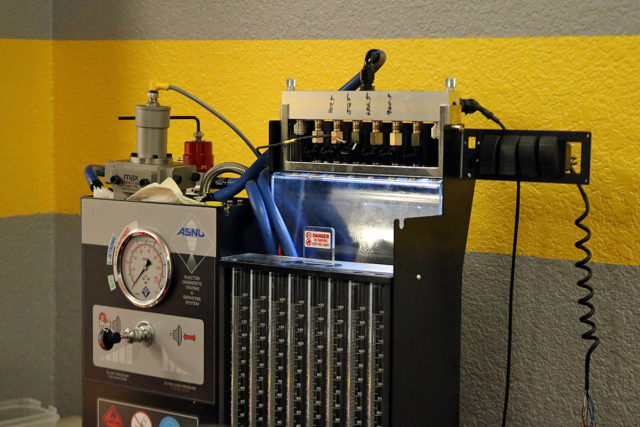
To calculate the minimum injector size each of our engines will need, it’s as simple as taking our total pounds per hour fuel requirement from above and divide that value by the number of cylinders the engine has.
Formula To Find The Minimum Fuel Injector Size
Lbs/Hr Required Fuel Flow ÷ Cylinder Count
- 440 lbs/hr ÷ 8 cylinders
- 55 lbs/hr
LSX:
- 360 lbs/hr ÷ 8 cylinders
- 45 lbs/hr
According to our work — running on pump gas — the turbocharged small-block Ford will need a minimum injector size of 55 pounds of fuel per hour, and the LSX will need at least 45 pounds of fuel per hour of fuel flow. If we used an injector of this size on our engines, however, we would be operating at 100 percent Duty Cycle at peak power. Of course these fueling requirements will change depending on the fuel being ran
“Most enthusiasts will just find a fuel injector calculator online that uses a simple formula and will rely on that to determine the correct fuel injector size for their build,” Strader says. “The problem with those calculators is that they assume only the best case scenario with the absolute best theoretical operating conditions. So if your fuel pressure drops a little low, your air/fuel mixture is a little on the rich side, or you ran a little more boost than you thought, you’re going to run out of injector quick!”
“Ultimately, the ‘best’ way to size the injectors for you engine is to assume the worst. Think about running the highest possible boost pressure for your setup, at the richest air/fuel ratio, and at the lowest fuel pressure,” says Strader. “Basically take all of the worst case scenarios and combine them together, then base your injector sizing off of that. This will guarantee that no matter what condition gets throw at you, your engine’s fuel system will always have enough headroom to handle it.”
Alternatively, if you wanted to keep it simple and don’t require absolute precision in your fuel delivery, simply increase the minimum injector flow values calculated above by an additional 15 to 20 percent to create a safety margin.
Which means that on pump gas, our SBF’s ideal injector flow size should be closer to 66 lbs/hr to be safe and the LSX would benefit with the extra headroom provided by something closer to 54 lbs/hr.
“One of the most common factors that contributes to an unnecessary fuel consumption increase in forced induction applications is actually guys who are overly cautions and run their engine far richer than it actually needs to be,” states Strader. “It’s not uncommon to see guys running around with a 10.5:1 air/fuel ratio because they’re worried about breaking something. Then you begin to experience the additional fuel washing the oil off of the cylinder walls, which then reduces ring seal and increases friction. It just compounds on itself and just makes everything worse.”
Joining The Rest Of The World
If you’re one of our many readers who are with the rest of the world and use the metric system, to convert lbs/hr to cc/min, multiply your lbs/hr value by 10.2. And to convert from cc/min to lbs/hr, it’s as easy as dividing your cc/min measurement by 10.2, instead.
Small-block Ford:
- 66 lbs/hr × 10.2
- 673.2 cc/min
LSX:
- 54 lbs/hr × 10.2
- 550.8 cc/min
“In the real world, there’s a big difference between getting away with doing something and actually doing it correctly. It’s a real blessing that a lot of these engines are tolerant and will allow people to get away with an amazing amount of sloppiness or error,” Strader elaborates. “If we only used how much horsepower an engine made as a yardstick to measure how good an engine is, everyone would have a ‘great’ engine. This is why overall efficiency is just as important as raw power.”
The Takeaway
Even though I’ve spent a number of years as an independent EFI calibrator and mechanic, and of course as a staff writer for EngineLabs, EFI University’s ACP Program offers the ultimate experience for both beginners and professionals alike. Nothing beats investing in your own worth through knowledge, and to have that knowledge presented to you by patient and well-spoken professionals with a backing from some of the biggest names in the aftermarket industry. Not to mention the industry networking with fellow students and other instructors.
The point is, EFI University’s ACP Program has more than enough to offer for anyone from any background, whether a seasoned industry professional or an enthusiast just looking to get started! I can say without a doubt that this course permanently altered the way I look at an engine, and through hands-on objective learning, I was given the tools to become a better and more confident EFI calibrator and mechanic.
For a full list of hands-on and online courses, locations and dates, check out the EFI University website for more info!